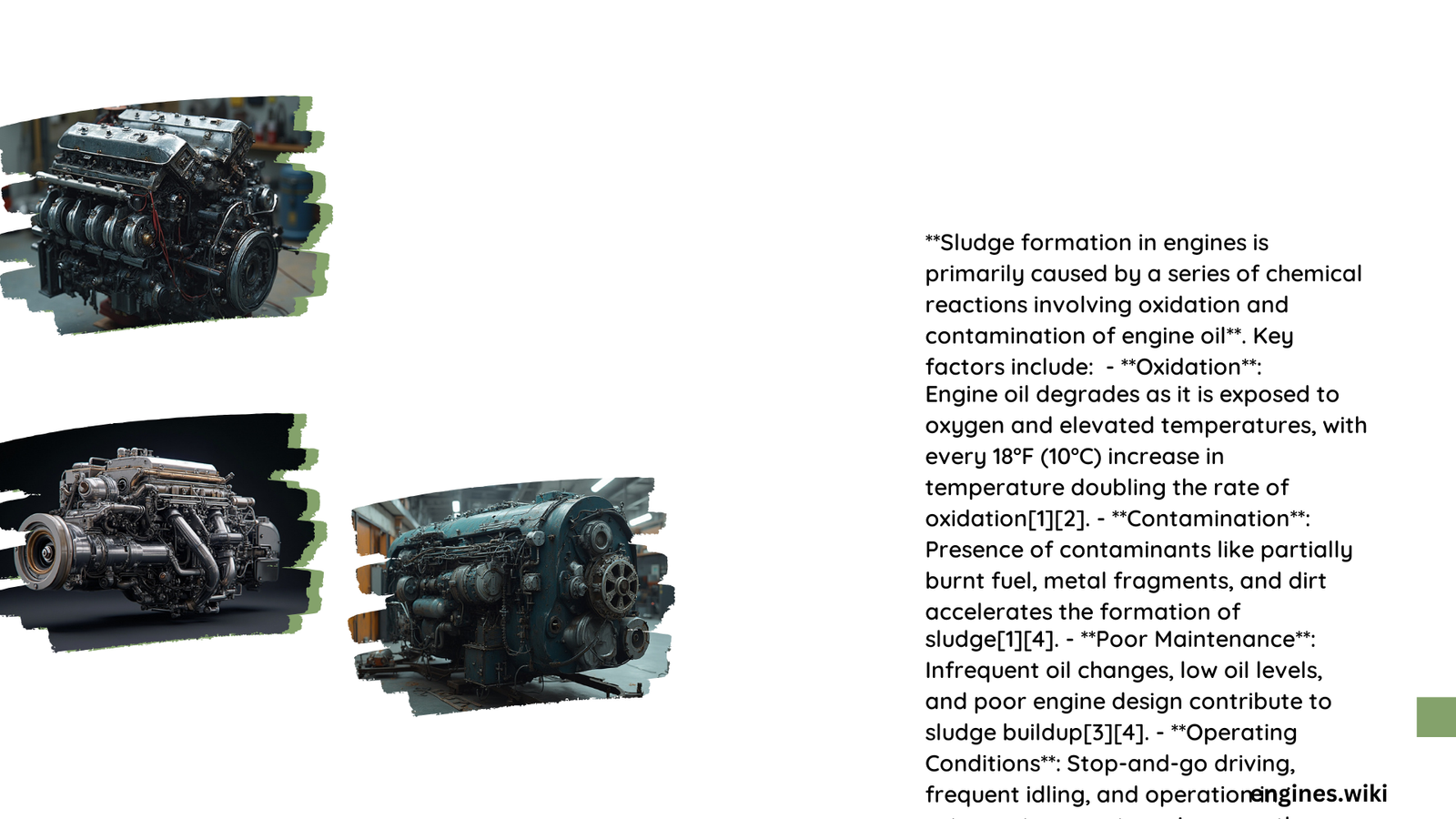Sludge formation in engines is a critical issue that can lead to severe engine damage and costly repairs. This process occurs when engine oil breaks down due to various factors, including high temperatures, oxidation, and contamination. The resulting thick, sticky substance can clog oil passages, reduce lubrication, and ultimately cause engine failure. Understanding the causes and prevention methods of sludge formation is essential for maintaining engine health and longevity.
What Are the Chemical Processes Behind Sludge Formation in Engines?
The formation of sludge in engines is primarily driven by chemical reactions and thermal factors:
Oxidation Process
- Engine oil degrades when exposed to oxygen and high temperatures
- Every 18°F (10°C) increase in temperature doubles the oxidation rate
- Oxidation creates reactive chemical byproducts, leading to organic acids and polymeric products
- These products eventually form insoluble sludge
Viscosity Breakdown
- Oxidation causes lubricant molecules to polymerize
- Heavier and larger molecules increase oil viscosity
- Increased viscosity can lead to near-solidification when cooled
Temperature Thresholds
- Optimal operating temperatures:
- Coolant: 170°F to 190°F
- Motor oil: Above 212°F
- Temperatures exceeding these thresholds accelerate oxidation and sludge formation
How Does Coolant Leakage Affect Engine Oil Integrity?

Coolant leakage into engine oil can have severe consequences:
Contamination Effects
- Coolant dilutes engine oil, reducing lubricating properties
- Ethylene glycol-based coolants create a corrosive environment
- Corrosion accelerates oil degradation and sludge formation
Viscosity Changes
- Coolant presence lowers oil viscosity
- Reduced viscosity decreases lubrication effectiveness
- Increased wear on engine components promotes sludge formation
Coolant Types and Their Impact
- Ethylene glycol-based coolants:
- Most common
- React with oil to form acidic compounds
- Contribute significantly to sludge formation
- Propylene glycol-based coolants:
- Less common but still problematic
- Generally considered less corrosive
- Can still cause similar issues as ethylene glycol-based coolants
What Are the Mileage Thresholds for Sludge Formation?
Mileage thresholds for sludge formation vary depending on several factors:
High Mileage Considerations
- Vehicles with inadequate oil changes are more prone to sludge
- Severe service conditions accelerate sludge formation:
- Stop-and-go driving
- Frequent idling
- Operation in extreme temperatures
Oil Change Intervals
- Severe conditions: Every 3,000 to 5,000 miles
- High mileage vehicles with synthetic oils: 7,500 to 10,000 miles
- Always follow manufacturer recommendations
Recommended Oil Types
- Synthetic oils with high concentrations of:
- Anti-oxidant additives
- Dispersant additives
- Detergent additives
- Example: AMSOIL Signature Series Synthetic Motor Oil
- Provides 90% better protection against sludge
What Are the Costs Associated with Addressing Sludge Formation?
Addressing sludge formation can be expensive:
Repair Costs
- Sludge blockage of oil passages and pump screens: $1,000 to $3,000+
- Costs vary depending on extent of damage
Preventative Maintenance
- Regular oil changes:
- High-quality synthetic oils: $50 to $150 per change
- Premium oil filters: Additional cost but crucial for prevention
- Engine flushing: Not always recommended, can be harmful if done incorrectly
- Oil additives:
- Break down sludge and combat harmful deposits
- Cost: $10 to $30 per treatment
How Can Sludge Formation in Engines Be Prevented?
Preventing sludge formation requires a proactive approach:
- Regular oil changes:
- Follow manufacturer recommendations
- Use high-quality synthetic oils
- Maintain optimal engine operating temperatures
- Use premium oil filters
- Address coolant leaks promptly
- Avoid severe service conditions when possible
- Use oil additives designed to combat sludge formation
- Monitor oil quality and viscosity regularly
By following these preventative measures, you can significantly reduce the risk of sludge formation in your engine, ensuring better performance and longevity.
References:
1. https://blog.amsoil.com/how-engine-sludge-forms-and-how-to-prevent-it-2/
2. http://www.synlube.com/sludge.htm
3. https://www.hotshotsecret.com/what-is-engine-sludge/
